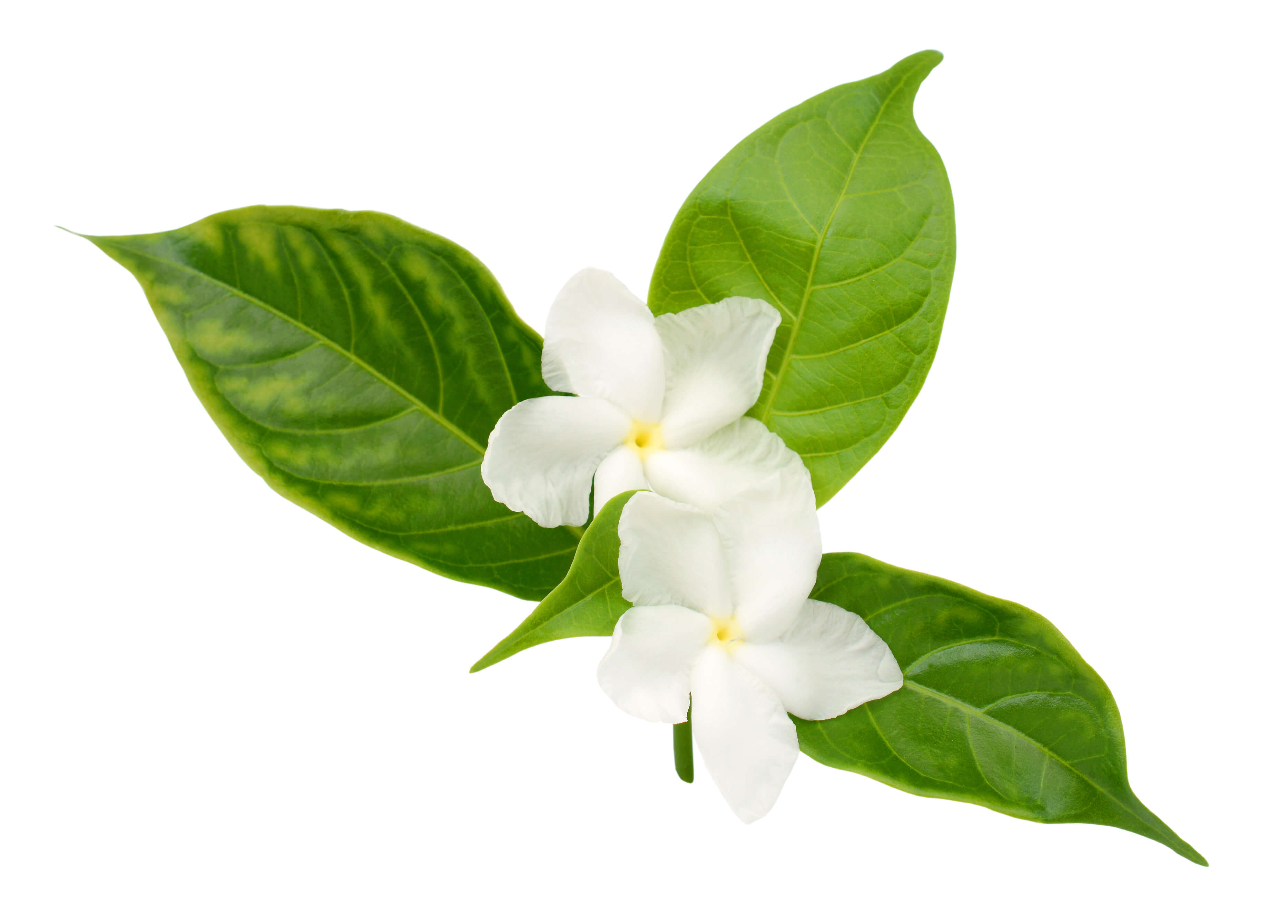
Jasmine Sambac concrete
Jasminum, whether it be sambac, grandiflorum, or auriculatum, is a white-flowered shrub that can grow from 1 to 3 meters in height and form hedges in fields of cultivation. It belongs to the family Oleaceae and the genus Jasmimum.

Do you sell any of the raw materials? Would you like to let our users know?
Send an email to fournisseurs@scentree.coto learn about our advertising opportunities.
Do you sell any of the raw materials? Would you like to let our users know?
Send an email to fournisseurs@scentree.coto learn about our advertising opportunities.
General Presentation
-
CAS N° : 91770-14-8 // 1034798-23-6
-
EINECS number : 292-797-4
-
FEMA number : 2598
-
Density :
-
Optical rotation : Donnée indisponible
-
Allergens : Linalool - Benzyl Benzoate - Eugenol
-
Refractive Index @20°C : Donnée indisponible
-
Volatility : Heart/Base
-
Price Range : €€€€
-
Appearance : Orange viscous paste
Uses
Other comments :
While Jasminum grandiflorum L. (Jasmine Grandiflorum Absolute) has been used by perfumers since the beginning of perfumery, Jasminum sambac L. only gained popularity in the 1980s. Although the absolute is produced in relatively large volumes compared to other flowers, it represents only a small part of the global market for jasmine (~10%). Indeed, the main part of the flowers are reserved for religious ceremonies, decoration, divine offers, ornaments, or in women's hairstyles. This flower is also the queen of weddings.
In Sanskrit, one of India's official languages, ''Sambac '' means ''hauting perfume. '' Jasmine is also the national flower of Indonesia, despite cultivation there is quite rare.
The cultivation of Jasminum sambac L. is subject to thrips invasions (small insects attacking the leaves), moths, and nematodes (attacking the roots).
The scent of Jasminum sambac L. is greener due to its high level of Farnesene. The scent of Egyptian jasmine is more fruity and sweet. Indian jasmine, on the other hand, is more jammy, gourmand and petal-like.
Stability :
This compound is highly stable but exhibits low solubility in alcohol. Despite being present in trace amounts, it contains methyl anthranilate which can result in Schiff base reactions under certain conditions.
Uses in perfumery :
The Jasmine Sambac Concrete is not so much used as the Jasmine Sambac Absolute. Nevertheless, it is very interesting to work on the animalic, indolic and voluptuous character of the fresh flower. The sambac is the flower which brings the highest natural amount of indole! It can be used in feminine floral accords ( most notably with orange blossom absolute or tuberose absolute), in soliflores or in some ''old '' chypres (with rose centifolia absolute). However, beware this ingredient has numerous allergenic molecules as well as the pair methyl anthranilate, dimethyl anthranilate.
Major Components :

Photo credits: ScenTree SAS
Botanique :
Jasminum sambac (L.) Aiton
Synonyms : Jasminum bicorollatum Noronha // Jasminum trifoliatum Telfair
Chemotypes :
In perfumery, two varieties of jasmine are mainly used:
Jasminum grandiflorum L. (Jasmine Grandiflorum Absolute / Jasmine Grandiflorum Concrete) found for example in Grasse or Egypt.
Jasminum sambac (L.) Aiton (Jasmine Sambac Absolute / Jasmine Sambac Concrete) mostly cultivated in India.
These two varieties are easily recognizable as grandiflorum has large and rounded flowers while those of sambac are thinner and longer.
Two other species are also grown for perfumery, in smaller proportions:
Jasminum asteroides
Jasminum auriculatum Vahl (Jasmine Auriculatum Absolute / Jasmine Auriculatum Concrete) mainly cultivated in India.
Extraction process :
The jasmine sambac flower, also known as ''White gold '' in India, is usually harvested from March to September. These flowers are handpicked at sunrise and must be processed within the day because once separated from the shrub, they can only survive for a few hours. The flower buds are then transported to the factory, and a resting phase of approximately 1 to 2 hours allows for the aeration and opening of the buds. At this moment, the jasmine flowers can be processed.
Formerly extracted using the enfleurage technique, the flower is now mainly processed with volatile solvents. This extraction is carried out using hexane. The flowers macerate in the solvent for 10 to 12 hours until exhausted. They are then removed from the extractor, and the solvent is evaporated. This produces a waxy, greenish-orange paste, the Jasmine Sambac Concrete (yielding 0.1 to 0.2% from fresh flowers).
In most cases, the extraction does not stop there and goes on to obtain the Jasmin Sambac Absolute through a succession of steps: alcohol glazing, wax filtration, and alcohol evaporation. The yield of such a product is then less than 0.1% from fresh flowers.
At this stage, molecular distillation may practiced to match regulatory or olfactory requirement. The result is a Jasmin Sambac Absolute DM.
As is the case with many flowers, the harvesting period has a significant influence on the scent. For Jasmin Sambac, it is known that jasmine flowers harvested in spring (March-May) are much greener and more vibrant because of an higher farnesene content , while those harvested in autumn (September-October) are more animalic and dense because of indole content.
Geographic origin :
Data not available.
Regulations & IFRA
This ingredient is not restricted

